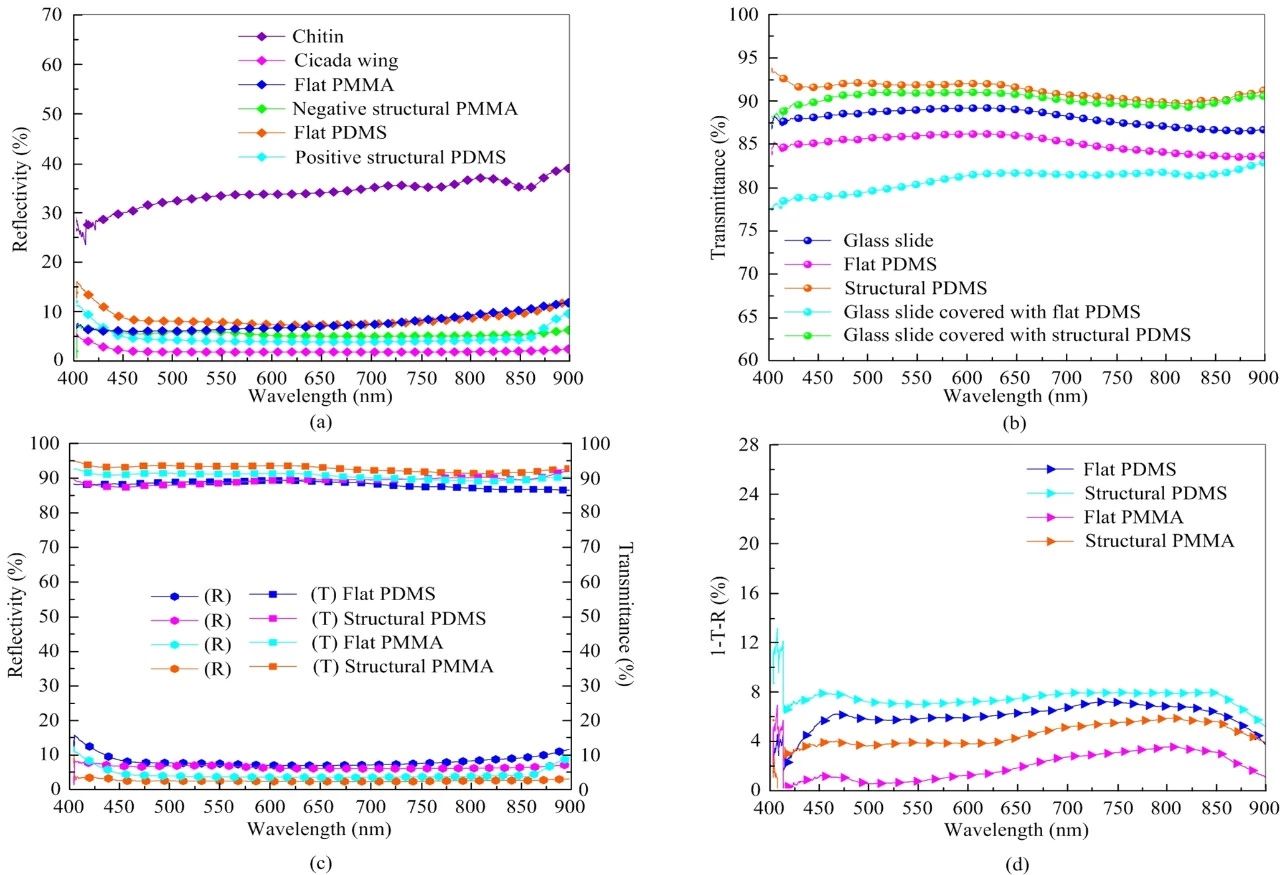Ze Wang1, Bo Li1,2, Xiaoming Feng1, ZhibinJiao1, Junqiu Zhang1,3,4, Shichao Niu1,4*,
Zhiwu Han1*, Luquan Ren1
1. Key Laboratory of Bionic Engineering(Ministry of Education, China), Jilin University, Changchun 130022, China
2. Department of Chemistry, University of California-Riverside, California 92521, USA
3. Department of Mechanical Engineering, Columbia University, New York 10027, USA
4. State Key Laboratory of Automotive Simulation and Control, Jilin University, Changchun 130022, China
Abstract
Inspired by cicada wings, a flexible film with self-cleaning and broadband antireflection properties was fabricated with a rapid, straight forward and cost-effective method. The cicada wing was selected as the original template,and a polymethyl methacrylate (PMMA) negative replica was obtained by evaporation solvent process. The original template was directly peeled off. Subsequently, the polydimethylsiloxane (PDMS) was spread in the as-prepared PMMA negative replica. After curing and peeling processes, the PDMS positive replica was manufactured successfully. The morphologies and performances of cicada wings were perfectly inherited by the PDMS positive replica. What is more, the excellent optical property of cicada wing was investigated experimentally and theoretically. Compared with flat PDMS film, the average reflectivity of structural PDMS film was reduced from 9% to 3.5% in the wavelength range of 500 nm – 900 nm. These excellent antireflection properties of bio-inspired antireflection film can be attributed to the nanostructures which achieve agradient refractive index between air and the materials, and the mechanism ofthe antireflection properties was revealed via effective medium theory. Besides, the bio-inspired broadband antireflective film exhibited superhydrophobic property after the surface treatment (a 152.1˚ water contact angle), and it also displayed satisfactory flexibility. This work provided a universal method to fabricate the exquisite biological structures, realizing the transfer of structure and function. Moreover, the multifunctional antireflection film exhibited the potential value for applications in optical communications, flexible display screens, and anti-dazzle glasses.

Fig. W1 Schematics of mechanism for antireflection of thecicada wing. (a) Various optical behaviors on the surface of cicada wings; (b) thediagram of the gradient refractive index.

Fig. W2 Themorphologies and components of the PDMS positive replica. (a) Digital photograph of PDMS positive replica; (b) the AFM image of PDMS positive replica; (c) the FESEM image of PDMS positive replica; (d) the FTIRspectrum of PDMS positive replica.

Fig. W3 The optical performance analysisof the positive PDMS replica. (a) Reflectance spectra ofdifferent surfaces; (b) transmittance spectra of differentsurfaces; (c) optical properties of the films fabricated with differentmaterials; (d) the S (1-T-R) curves of the films fabricated with differentmaterials.

Fig. W4 (a) Schematic diagram of the lightpathway through the different regions of the replica; I=Incident light, T=Transmission, R=Reflection; (b) the replica under strong light; (b)-1 thereplica in a highly curved state; (c) schematic diagram of the stretching test;(d) the reflectivity curves of the PDMS replica after stretch-recovery process.
Information Source: https://mp.weixin.qq.com/s/5i389uYOm6y3PzuNM7jI1g

